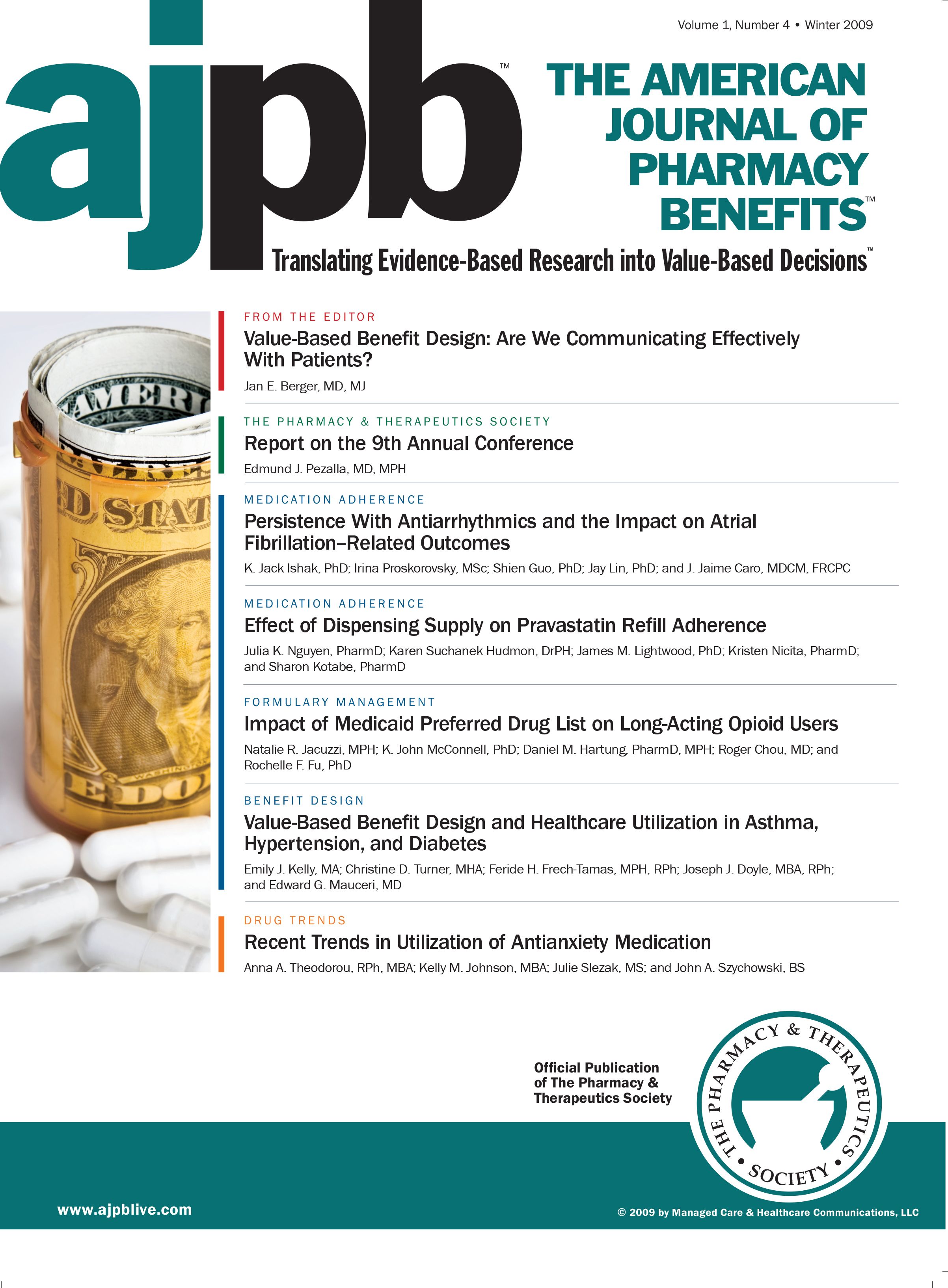Publication
Article
AJPB® Translating Evidence-Based Research Into Value-Based Decisions®
Requiring Better Evidence for Formulary Coverage
To the Editor:
We commend Dr. Shrank’s call for better evidence to inform formulary decisions in the fall issue of this journal.1 As part of a drug information team responsible for evaluating drugs under consideration for formulary addition, we are well aware of the critical need for improvement in this area.
We wholeheartedly agree that manufacturers must be held accountable for providing patient-oriented evidence that matters (POEM), including comparative effectiveness trials, rather than disease-oriented evidence.2 Many new agents are “me-too drugs,” lacking any clear advantage over available agents. Their place in therapy cannot be properly evaluated with surrogate marker data and—more importantly—trials of questionable quality. Furthermore, long-term safety data often are lacking, giving an incomplete picture of a drug’s benefit versus its risk.
To help communicate to manufacturers the type of information needed for Pharmacy and Therapeutics (P&T) review, WellPoint has developed Health Technology Assessment Guidelines.3 The premise is that the evolution of evidence-based medicine has brought with it the expectation that more healthcare decisions now can be based on high-quality evidence.
Medications with the best outcomes in terms of hard end points (ie, morbidity and mortality) are the ones that should be given greatest consideration for formulary placement. Case in point, our P&T Committee came to the same conclusion as Shrank regarding ezetimibe.1 The limited efficacy reported in placebo-controlled trials using surrogate outcomes resulted in our evaluation of ezetimibe in a less favorable light than other cardiovascular drug comparators (ie, statins) that do have POEM outcomes data.
Shrank speaks about the importance of an educational component around formulary evaluations.1 WellPoint agrees that there is a need to go beyond just communicating formulary decisions. We are strengthening our efforts to inform providers and members about our P&T process and the rigorous reviews undertaken to ensure that our formulary includes the most safe and efficacious drugs.
To refute the notion that our decisions are based solely on cost, we have begun to highlight the key clinical points considered for selecting drugs with proven value in major therapeutic areas using a variety of communication channels. To date, educational pieces explaining the general P&T process and the rationale behind formulary decisions in specific medication categories have been distributed to members and providers within our system.
The P&T Committee must embrace its role of being the rational, unbiased arbiter of efficacy and safety evidence for medications. Subsequently, there must be transparency around formulary decisions to gain the trust of members, providers, and the public as a whole. Ultimately, we all are responsible for ensuring the best use of our limited healthcare resources. To meet that goal, we need quality outcomes data that are not only statistically significant, but also clinically relevant. Whether we are consumers, providers, or payers, we must insist on nothing less.
Karen Martin, PharmD, MBA, CGPH. Eloise Campbell, BS, PharmDVicki S. Fisher, BS, PharmDTonya M. Martin, PharmD, BCPSHarsha H. Mistry, PharmD
WellPoint, IncIndianapolis, IN







